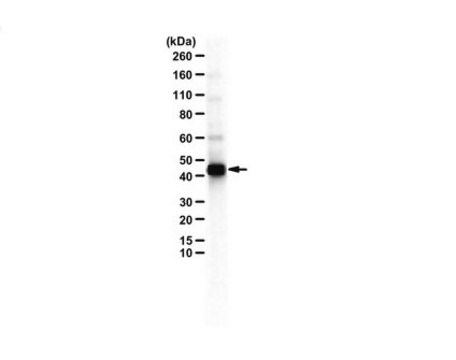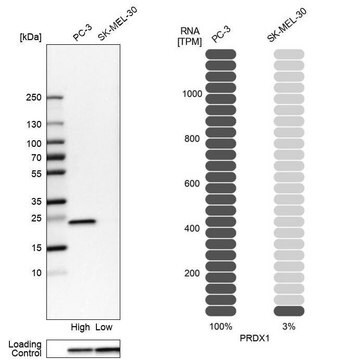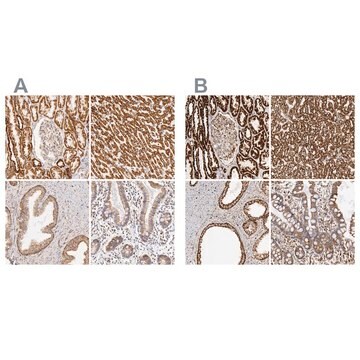ABE1877M
Anti-PAXIP1
from rabbit
Synonim(y):
PAX-interacting protein 1, PAX transactivation activation domain-interacting protein, PAXIP
About This Item
IP
WB
immunoprecipitation (IP): suitable
western blot: suitable
Polecane produkty
pochodzenie biologiczne
rabbit
Poziom jakości
forma przeciwciała
affinity isolated antibody
rodzaj przeciwciała
primary antibodies
klon
polyclonal
reaktywność gatunkowa
human, mouse
opakowanie
antibody small pack of 25 μL
metody
ChIP: suitable (ChIP-seq)
immunoprecipitation (IP): suitable
western blot: suitable
izotyp
IgG
numer dostępu NCBI
numer dostępu UniProt
docelowa modyfikacja potranslacyjna
unmodified
informacje o genach
human ... PAXIP1(22976)
mouse ... Paxip1(55982)
Opis ogólny
Specyficzność
Immunogen
Zastosowanie
ChIP-seq Analysis: Analysis: A representative lot detected PAXIP1 in ChIP-seq applications (Callen, E., et. al. (2012). Immunity. 37(6):971-85).
Immunoprecipitation Analysis: A representative lot detected PAXIP1 in Immunoprecipitation applications (Gong, Z., et. al. (2009). J Biol Chem. 284(11):7284-93).
Immunoprecipitation Analysis: 1 µg from a representative lot detected PAXIP1 in nuclear extract of wild type and PTIP KO mouse embryonic fibroblasts (Courtesy of Dr. Ji-Eun Lee and Dr. Kai Ge at NIH).
Western Blotting Analysis: A representative lot detected PAXIP1 in Western Blotting applications (Cho, Y.W., et. al. (2009). Cell Metab. 10(1):27-39; Gong, Z., et. al. (2009). J Biol Chem. 284(11):7284-93).
Epigenetics & Nuclear Function
Jakość
Western Blotting Analysis: A 1:10,000 dilution of this antibody detected recombinant PAX-interacting protein 1.
Opis wartości docelowych
Postać fizyczna
Przechowywanie i stabilność
Inne uwagi
Oświadczenie o zrzeczeniu się odpowiedzialności
Nie możesz znaleźć właściwego produktu?
Wypróbuj nasz Narzędzie selektora produktów.
Kod klasy składowania
12 - Non Combustible Liquids
Klasa zagrożenia wodnego (WGK)
WGK 1
Temperatura zapłonu (°F)
Not applicable
Temperatura zapłonu (°C)
Not applicable
Certyfikaty analizy (CoA)
Poszukaj Certyfikaty analizy (CoA), wpisując numer partii/serii produktów. Numery serii i partii można znaleźć na etykiecie produktu po słowach „seria” lub „partia”.
Masz już ten produkt?
Dokumenty związane z niedawno zakupionymi produktami zostały zamieszczone w Bibliotece dokumentów.
Nasz zespół naukowców ma doświadczenie we wszystkich obszarach badań, w tym w naukach przyrodniczych, materiałoznawstwie, syntezie chemicznej, chromatografii, analityce i wielu innych dziedzinach.
Skontaktuj się z zespołem ds. pomocy technicznej








